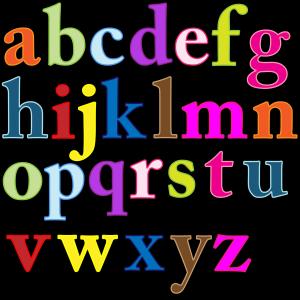As reading scores keep declining, parents have long been complaining that their children aren’t being taught effectively how to read. Now civil rights activists have taken up the cause, claiming that the failure of public school systems to teach basic literacy to black and hispanic children is a social justice issue.
It turns out, there has been a great deal of high-quality scientific research into the best way to teach children how to read. We now know what works and what does not.
And yet, as both conservatives and progressives join in demanding that schools follow “the science of reading,” many teachers, school systems, curriculum publishers, and (crucially) university teacher training programs are resisting.
The New York Times has published an article entitled ‘Kids Can’t Read’: The Revolt That Is Taking on the Education Establishment. Here is the gist:
A revolt over how children are taught to read, steadily building for years, is now sweeping school board meetings and statehouses around the country.
The movement, under the banner of “the science of reading,” is targeting the education establishment: school districts, literacy gurus, publishers and colleges of education, which critics say have failed to embrace the cognitive science of how children learn to read. . . .
The movement has drawn support across economic, racial and political lines. Its champions include parents of children with dyslexia; civil rights activists with the N.A.A.C.P.; lawmakers from both sides of the aisle; and everyday teachers and principals.
Together, they are getting results.
And do you know what “the science of reading” has proven, what educators need to do in order to “follow the science” in teaching reading? Teach PHONICS.
Says the Times story, “Research shows that most children need systematic, sound-it-out instruction — known as phonics — as well as other direct support, like building vocabulary and expanding students’ knowledge of the world.”
Science confirms that children pick up how to read by learning the letters and the sounds they make, putting them together according to consistent patterns, and “sounding out” words they don’t yet know. This approach– known as “phonics,” referring to learning to read by attending to “sounds”–is the way reading has been taught and learned for centuries. This is the “classic” way to teach reading.
So why do so many contemporary educators reject it? Critics of phonics say that “this is not how people actually read.” True, fluent readers don’t have to sound out every word they encounter. Once they know the words, they can recognize them and process them mentally quickly and even silently. But phonics is how nearly all fluent readers learned to read. Making that connection between the oral word and the written word is critical. You cannot leave out that step and jump straight to fluency.
Other critics of phonics say that English writing is not truly phonetic. They say that under English spelling, “ghoti” can be sounded out to mean “fish” (“gh” as in enough, “o” as in women, “ti” as in nation). But, though English spelling is complicated and often captures how words used to sound when they first came into written form, it is still rules-based. As the Wikipedia entry for Ghoti explains,
The pronunciations of the constructed word’s three parts are inconsistent with how they would ordinarily be pronounced in those placements. To illustrate: gh can only resemble f when following the letters ou or au at the end of certain morphemes (“tough”, “cough”, “laugh”), while ti would only resemble sh when followed by a vowel sound (“martian”, “patient”, “spatial”). The expected pronunciation in English would sound like “goaty” /ˈɡoʊti/, not “fish.”
I have also heard educators say that they teach reading–as well as other subjects–by immersion. Children don’t learn to speak their native language by studying paradigms and practicing with flash cards. They learn to talk naturally, by being surrounded by people talking to them. These educators say that reading should be taught the same way: surround children with books, read to them, and devote class time for children to look at books on subjects they like. We don’t need to “teach reading,” these educators claim. With this “natural” approach, children will pick up that skill on their own.
But being able to speak is a completely different skill from being able to read. The latter must be taught. Simply immersing children in books will do little if the children cannot read them.
Such “whole language” approaches are generally accompanied by a visual approach to decoding writing. Students are taught to learn what words look like. They are asked to memorize the shape and appearance of words, rather than how they sound.
Students taught this way, if they pay close attention, might learn a collection of “sight words.” But when they come across a word they do not recognize, they have no way to figure it out. They are kept from learning new words and acquiring a bigger vocabulary. A student with a really good memory might be able to function by memorizing hundreds of words, though they too are likely to be held back from their potential. But students without such a good memory will be permanently held down.
In practice, what many students do in order to become good readers is to figure out the alphabetic system themselves, learning “phonics” on their own, with little help from school. The schools are busy teaching what is, in effect, the system of reading used in the Chinese language.
The Chinese writing system consists of ideographs, stylized drawings that symbolize each word. Every word has its “character” that must be memorized. Reading requires recognizing each of these complex drawings, and writing requires the even more challenging skill of being able to draw them oneself. According to Bruce Upbin, “There are some 10,000 Chinese characters in common use. Basic literacy, according to the Chinese government, starts at two thousand characters. A solid grasp of a daily Beijing newspaper requires knowing around three thousand. An erudite Chinese reader should recognize five to seven thousand characters.”
So to learn to read Chinese, one must learn thousands of separate symbols. In an alphabetic system, by contrast, using phonics, one need only learn 26 symbols, plus some rules of how they work together. Since the student already knows how to speak, the meaning of those symbols is easy to recognize.
In traditional Chinese, the reading and writing system has little to do with the spoken language. It is demonstrably harder to become literate in that system, than it is with a language that breaks up its words into component sounds with an alphabet. Historically in China, the ability to read and write was an elitist skill, to the point that the small educated class constituting the imperial bureaucracy basically ruled the country. Today the literacy rate is much higher, due in part to adding oral and alphabetic elements–particularly representations of spoken syllables–to the writing system.
Meanwhile, western educators have been downplaying the connection of our written alphabet to the sounds of the language in favor of stressing the visual appearance of written words. In doing so, they are turning our alphabetic system into an ideographic system. That is to say, they are adopting the Chinese approach to reading and writing, despite its difficulty and despite the efforts by the Chinese themselves to adopt more of a phonetic system such as the one that made universal literacy so much easier to achieve in the West.
So how can we account for the resistance in the educational establishment to “the science of reading”? There is nothing intrinsically political about phonics. Those who believe in equality and equity should appreciate the approach that makes it easier for all children to learn how to read.
I suspect one reason is that, by the canons of progressivism, anything old, anything “classic” that has stood the test of time, is to be rejected in favor of “new ideas.” Progressivism loves to be experimental. Even though many experiments fail, once they are tried. Genuine progress, like genuine science, builds on past knowledge. But false progress is always starting over from scratch. Thus, tenure-seeking education professors develop “new teaching techniques” and curriculum publishers church out expensive new and ever-changing products for the lucrative educational marketplace.
Also, “the science of reading” implies the reality of human nature and objective truths, both of which violate the dominant academic worldview of constructivism, which teaches that truth is relative and reality is nothing more than a subjective construction, whether the construction of an oppressive power or a personal construction of a liberated consciousness.
After all, if truth is relative, what is there to teach? Instead of teaching facts, such as the sounds that the letters make, this mindset will prefer teaching children to make up their own spelling rules and to spend class time on political indoctrination rather than teaching the truly liberating art of reading.
Illustration by Karen Arnold via PublicDomainPictures.net, CC0 Public Domain













